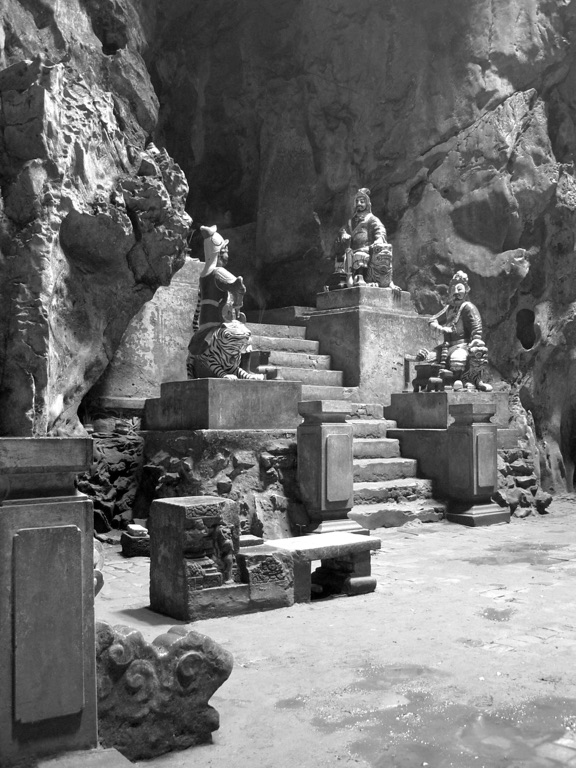Nestled within the Marble Mountains of Vietnam, Huyen Khong Cave stands as a serene sanctuary. Revered for its spiritual significance, the cave has been a place of worship for centuries. Its name, translating to “Cave of the Scented Clouds,” hints at the ethereal atmosphere that greets visitors. The cave’s natural beauty and historical importance make it a popular destination for both pilgrims and tourists.
Tran Dynasty
The Tran Dynasty, ruling from 1225 to 1400 AD, was a period of significant development and prosperity in Vietnamese history. Originating from the Red River Delta in present-day Northern Vietnam, the Tran family rose to prominence by marrying into the royal Ly family, eventually establishing their own dynasty. This era is particularly noted for its remarkable achievements in politics, culture, and military prowess, leaving a lasting legacy on Vietnamese civilization.
One of the major moments in the Tran Dynasty’s history was its successful defense against three major Mongol invasions between 1258 and 1288 AD. Under the leadership of Tran Hung Dao, one of Vietnam’s most revered generals, the Tran Dynasty’s forces employed guerrilla warfare tactics and took advantage of the local terrain to repel the Mongol forces, led by Kublai Khan. These victories not only preserved Vietnam’s sovereignty but also elevated the national spirit and pride.
Religion during the Tran Dynasty saw a harmonious blend of Buddhism, Confucianism, and Taoism, reflecting a diverse and tolerant spiritual landscape. Buddhism, in particular, flourished during this time, with the state actively promoting its teachings and practices. Many temples and pagodas were constructed, and Buddhist literature and art thrived, contributing significantly to the cultural richness of the period.
Social and daily life in the Tran Dynasty was characterized by a structured society divided into various classes, including nobles, peasants, craftsmen, and traders. Agriculture was the backbone of the economy, with rice cultivation playing a central role. The Tran rulers implemented reforms to improve agricultural techniques, irrigation, and land management, which in turn boosted productivity and stability.
The Tran Dynasty was led by several notable rulers, beginning with Tran Thai Tong, the first emperor, who ascended to the throne in 1225 AD. His leadership was marked by efforts to consolidate power and stabilize the newly established dynasty. Among the most celebrated rulers was Tran Nhan Tong, who after abdicating the throne, became a Buddhist monk and founded the Truc Lam Zen Buddhism, which had a profound influence on Vietnamese spirituality.
The Tran Dynasty also saw advancements in literature, education, and the arts. The establishment of the Quoc Tu Giam, or Imperial Academy, in 1253 AD, was a significant step towards promoting education and Confucian learning. Literature flourished with the development of Nom script, a demotic script that made literature accessible to a broader segment of the population.
Military achievements under the Tran Dynasty were not limited to the defense against the Mongols. The dynasty also engaged in several campaigns to expand its territory and influence, including incursions into Champa and Cambodia. These military campaigns, while aggressive, helped to secure Vietnam’s borders and contributed to the stability and prosperity of the realm.
The decline of the Tran Dynasty began in the late 14th century, culminating in the ascension of the Ho Dynasty in 1400 AD. Despite its fall, the Tran Dynasty’s legacy endured, particularly in its contributions to Vietnamese culture, religion, and national identity. The Tran rulers are remembered for their wise governance, military prowess, and patronage of Buddhism, which shaped the course of Vietnamese history.

